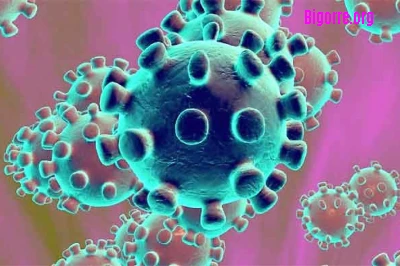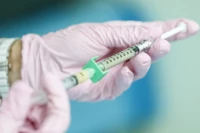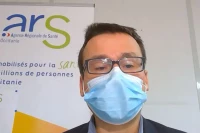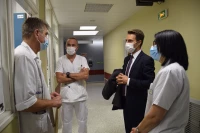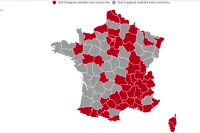Avec le déconfinement, l'activité économique redémarrage en France et la circulation du coronavirus aussi avec la crainte de voir venir une seconde vague de l'épidémie. 5 jours après le début du déconfinement il est trop tôt pour en constater les effets de cette circulation mais les bilans jusqu'ici quotidiens de l'Agence Régionale de Santé permettent de suivre l'épidémie dans la région et de guetter les prémices de son évolution. Des bulletins qui ne seront plus quotidiens puisque l'ARS a décidé le ne publier de bulletin que deux fois par semaines, les mardis et vendredis. Le bulletin de ce soir fait apparaître que depuis mardi le coronavirus a continué à régresser en Occitanie. En 3 jours il y a 54 personnes de moins dans les hôpitaux pour revenir à 351 personnes hospitalisées. Une baisse significative mais bien plus lente que n'avait été la hausse lors de la phase d'expansion du virus qui était de 60 hospitalisations de plus par jour quand on était au même niveau de contamination. Le nombre de patient pris en charge en réanimation recule lui aussi avec 11 personnes de moins sur les 3 derniers jours pour arriver à 80 personnes en réanimations aujourd'hui. En bilan qui fait aussi apparaître 8 décès en 3 jours dans le système hospitalier régional. L'ARS ne comptabilise toujours pas le nombre de victimes en dehors des établissements hospitaliers, que ce soit à domicile ou en EHPAD.
Une évolution inégale au sein de la région Occitanie
Alors que la tendance est donc toujours à la baisse au niveau de la région, tous les départements ne sont pas logés à la même enseigne. Il y a ceux qui baissent fortement comme la Haute-Garonne qui a 16 personnes de moins sur 3 jours dans les hôpitaux du département qui en accueille maintenant 46 alors qu'au plus haut de l'épidémie il y a eu jusqu'à 249 personnes hospitalisées. Et 6 patients de moins en réanimation sur 3 jours. L'Hérault est sur la même dynamique en passant de 271 personnes dans les hôpitaux à 46 dont 13 sur les 3 derniers jours. Il y a des départements qui ne baisse plus car il n'y presque plus personne dans les hôpitaux. C'est le cas de l'Ariège avec 3 personnes hospitalisées, de la Lozère avec 1 seule personne hospitalisée, du Tarn-et-Garonne qui a 5 personnes hospitalisées. Mais c'est dans les Pyrénées-Orientales que la baisse a été le plus impressionnante en passant de 129 personnes hospitalisées le 31 mars à 5 aujourd'hui. En enregistrant entre les deux 34 décès.
Le Gard et les Hautes-Pyrénées lanternes rouges de la baisse
Deux départements voient au contraire la régression se faire très lentement. C'est le cas des Hautes-Pyrénées qui ont encore 40 personnes hospitalisés. L'expansion du coronavirus dans ce département avait été lente mais elle a duré longtemps puisque que la baisse n'a commencé que le 25 avril, faisant des Hautes-Pyrénées le département le plus infecté de toute la région en tenant compte du nombre d'habitant. Depuis la baisse est lente avec 1 seule personne de moins dans les hôpitaux du département sur 3 jours et c'est toujours le département le plus infecté avec 17 personnes hospitalisées pour 100000 habitant alors que la moyenne en Occitanie n'est que de 6 personnes hospitalisées pour 100000 habitants. Dans le Gard le coronavirus fait aussi de la résistance avec encore 85 personnes hospitalisées. C'est le département qui a maintenant le plus grand nombre de personnes hospitalisé devant la Haute-Garonne et l'Hérault qui ont pourtant une démographie bien plus importante. Un département qui a été touché assez tôt par le coronavirus avec 113 personnes hospitalisées le 7 avril suivi d'une baisse et d'une reprise encore plus forte quelques jours plus tard avec 151 personnes hospitalisées le 22 avril. La baisse a ensuite mis près de deux semaines à commencer et elle est moins forte que dans les autres départements depuis.
Le risque qu'une seconde vague
Nous allons pouvoir observer dans les 10 prochains jours les premiers effets du déconfinement. Si la hausse est faible ou qu'il n'y a pas de hausse, le déconfinement pourra se poursuivre en passants aux étapes suivantes. En cas de hausse trop importante, les étapes suivantes du déconfinement seront reportées. Le reconfinement est aussi un scénario envisagé par Edouard Philippe qui ajoute que tout ce que nous faisons a pour objet d'éviter cette extrémité
. Un risque qui pourrait durer selon l'Organisation Mondiale de la Santé dont le directeur des questions d’urgence sanitaire a expliqué que Il est très difficile de dire quand nous pourrons le vaincre. Ce virus pourrait devenir endémique dans nos communautés
. Et le vaccin pour prévenir la contagion ne serait pas disponible avant un an selon l’Agence Européenne du Médicament dans un scénario qu'elle qualifie d'optimiste. En attendant il ne reste que les gestes barrière pour se protéger et protéger ceux qui nous entourent.
